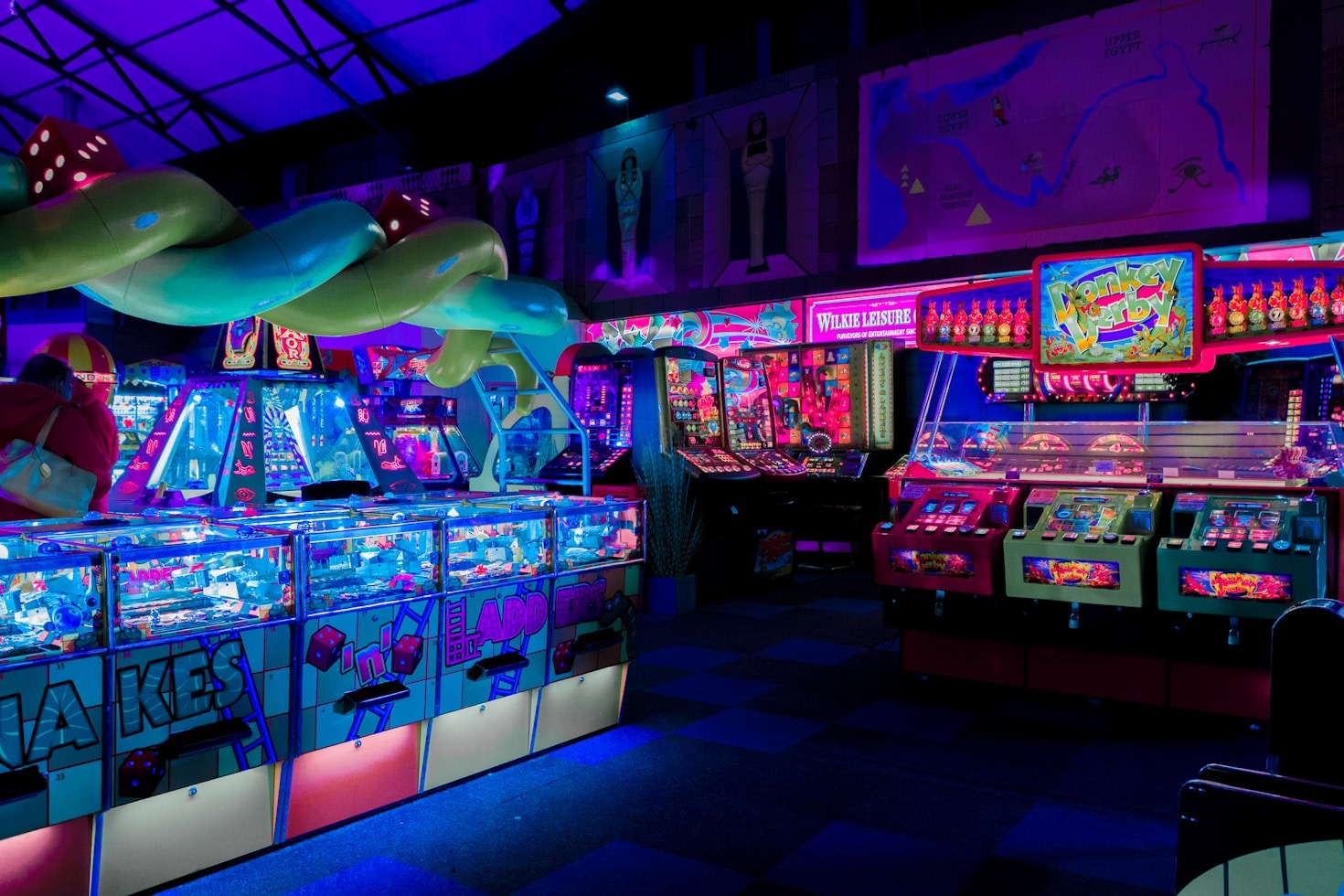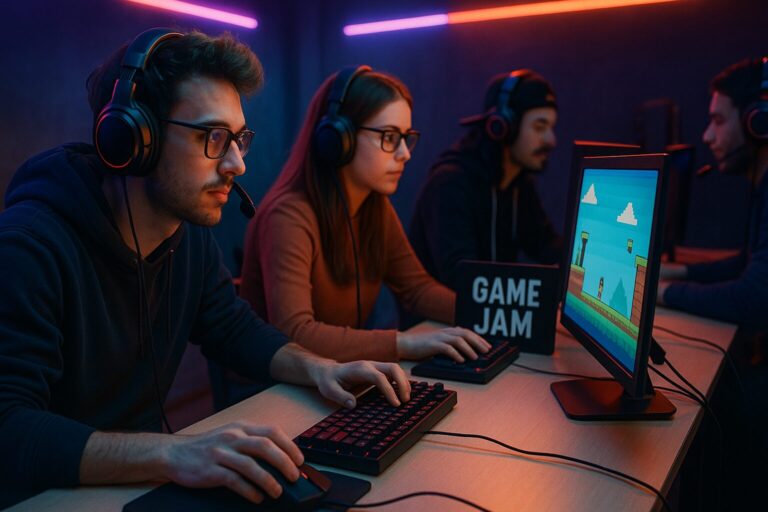
So you want to make your first game? That’s a big step—and a great one. The hardest part is getting started, and the second hardest is not quitting halfway through.
This guide will walk you through everything you need to know to build and finish your first game project. No prior experience needed. Just follow each step, keep things simple, and take it one task at a time.
Step 1: Start With a Simple Idea
Your first game should be small, focused, and achievable. This is your sandbox to learn in—not your dream project.
Do this:
- Choose a core mechanic—one thing the player does (jumping, dodging, matching tiles, etc.)
- Add a goal—something the player is trying to achieve (reach the end, get a high score, defeat all enemies)
Beginner-friendly examples:
- A platformer where you avoid spikes and collect coins
- A top-down maze where you find a key and unlock a door
- A match-3 puzzle game with colored tiles
- A clicker game where every click earns currency
Keep it so small that you can finish it in a week or two. You’re learning to build, not to impress.
Step 2: Choose a Game Engine
A game engine is software that gives you the tools to build a game without creating everything from scratch. Here are four good options:
Godot
- Best for: 2D games and small 3D projects
- Why: Lightweight, fast, open-source, beginner-friendly
- Coding language: GDScript (similar to Python)
- Platforms: Windows, Mac, Linux
- Free forever
Unity
- Best for: 2D and 3D games across all platforms
- Why: Huge community, lots of tutorials, tons of resources
- Coding language: C#
- Platforms: Windows, Mac
- Free with limitations (Unity Personal)
Unreal Engine
- Best for: High-end 3D graphics
- Why: Industry-standard, built-in visual scripting with Blueprints
- Coding language: C++ or Blueprints (no code)
- Platforms: Windows, Mac
- Free with royalty terms after revenue threshold
Construct 3
- Best for: No-code 2D game creation
- Why: Intuitive drag-and-drop interface, very beginner-friendly
- Coding: No code required
- Platforms: Web-based
- Free trial available, paid plans after
Tip: Pick one engine and stick with it. If you’re not sure where to start, Godot is a great balance of power and simplicity.
Step 3: Plan the Game on Paper
Before you open your engine, plan your game. This helps you stay focused and avoid getting overwhelmed.
Write down:
- What the player controls (character, object, cursor)
- What the player can do (jump, move, collect, shoot)
- What the goal is (complete a level, score points, beat a boss)
- What obstacles exist (enemies, hazards, time limits)
Example:
You control a character that moves left and right, and jumps. You must reach the door at the end of the level without touching spikes. Along the way, you can collect coins for bonus points.
Sketch a few level layouts or mechanics if it helps. Keep it loose. No need for a detailed document.
Step 4: Build a Playable Prototype
Open your engine and create a new project. Start small.
Focus only on your core mechanic.
In a platformer, that might mean:
- A character that moves and jumps
- Basic ground and walls
- One or two hazards (like spikes)
Don’t add art, sound, menus, or anything extra yet. The goal is to get the basic gameplay working.
Resources:
Test constantly. Make sure the core mechanic feels fun. If movement feels off, fix it now—before you build on top of it.
Step 5: Add Basic Art and Sound
Once the prototype works, you can make it look and sound a little better.
Free Art Assets
- Kenney Assets – Game-ready sprites and tiles
- Itch.io Asset Store – Free and paid art packs
- OpenGameArt – Wide selection of 2D and 3D assets
Tools to Make Your Own Art
- Piskel – Free pixel art editor
- Aseprite – Paid but popular tool for pixel animation
- Paint.NET – Lightweight image editor
Free Sound Effects and Music
- Freesound – Searchable community sounds
- Kenney Audio – Clean and simple effects
- YouTube Audio Library – Free background music
- Incompetech – Royalty-free music from Kevin MacLeod
Import assets into your game and hook them up. You now have a real game in progress.
Step 6: Add Levels or Challenges
Design one to five small levels. Each level should:
- Teach or reinforce a mechanic
- Introduce a small challenge
- Reward the player with progress
Keep level design simple. Use a spreadsheet or pen and paper to plan out layouts. If your game has no levels, use waves, rounds, or increasing difficulty.
Step 7: Test and Polish
Now you’re in the refinement phase.
Checklist:
- Is the game too easy or too hard?
- Are the controls smooth?
- Is there any confusion about what to do?
- Are there bugs or crashes?
Let friends or family playtest. Do not explain how to play—see what they figure out on their own.
Tweak values, add visual feedback, fix broken parts. This phase makes your game feel complete.
Step 8: Finish and Share Your Game
Do not wait forever to polish. Once it’s playable and mostly bug-free, export it.
Export tools:
- Godot: Export to HTML5 or Windows/Mac/Linux
- Unity: Build for Windows/Mac or WebGL
- Construct: One-click web export
Where to Share
- Itch.io – Easiest and best platform for indie games
- Newgrounds – Good for HTML5 games
- Game Jolt – Community-driven indie games site
Write a short description and upload it. You can always update the game later.
Final Thoughts
Your first game is your training ground. It doesn’t need to be perfect. It just needs to be finished.
Stick to one core mechanic. Use free tools and assets. Don’t waste time chasing polish before the game is working. Finish something playable, share it with the world, and then move on to the next project with more experience.
You’ll learn more by completing one simple game than starting five complex ones.
For more tutorials, guides, and beginner tips, keep following NoobGame.dev—your launchpad into game development.






